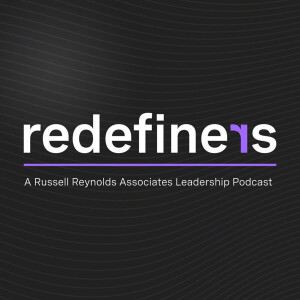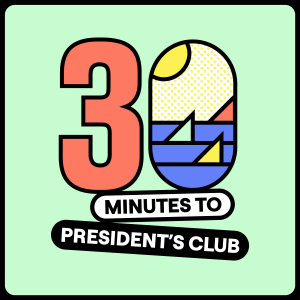

Speaking Of Reliability: Friends Discussing Reliability Engineering Topics | Warranty | Plant Maintenance
https://accendoreliability.com/series/sor/feed/Episode List

Reliability Allocation
Reliability Allocation Abstract Enrico and Fred discuss various approaches to allocation. Play Episode

Portable Device Feasibility
Portable Device Feasibility Abstract Chris and Fred discuss how we assess product feasibility … at the concept stage! Great topic. Key Points Join Chris and Fred as they discuss product feasibility when it is nothing more than a concept. There is a lot to unpack here! This comes from a question raised by a Singaporean listener who is a student looking at the feasibility of a portable device that repels mosquitoes, utilizing cutting-edge technology, including the ability to detect the unique frequencies of flying mosquitoes. Topics include: Hand-held devices get abused … a lot … without being abused. Engineers are routinely amazed by how people can drop, squash, bump, heat, chill, and otherwise do challenging things to it. The fact is, this happens when people aren’t trying to abuse handheld devices. So, start by never underestimating the trials and tribulations of handheld devices! You can’t be organization ‘agnostic.’ What is feasible for SpaceX is not feasible for a young startup with less than $ 500 000 in working capital. So, you need to determine what your organization can do, and if you are trying to get a larger company to buy your idea after you have created a proof of concept, and so on. Then the technology. Does it repel mosquitoes? You don’t need to build a working prototype to replicate the ‘technological tactics’ your final product will hopefully use to repel mosquitoes. But if the answer is ‘yes’ … don’t stop thinking! Fred discussed an example where a wearable health device had 50,000 units (out of 70,000) returned by customers in the first month because the recharging socket was not waterproof. The product was feasible, AND it is really easy to waterproof recharging sockets. They just didn’t do it! Enjoy an episode of Speaking of Reliability. Where you can join friends as they discuss reliability topics. Join us as we discuss topics ranging from design for reliability techniques to field data analysis approaches. Download Audio RSS Show Notes The post SOR 1083 Portable Device Feasibility appeared first on Accendo Reliability.

Equations for Goal Setting
Equations for Goal Setting Abstract Chris and Fred discuss what equations (if any) exist for setting and optimizing reliability goals … sometimes trading off against other goals. Wo … Key Points Join Chris and Fred as they discuss equations that exist to help you come up with and optimize reliability goals and targets. This comes from a listener who points out that well-known reliability software contains equations based on Weibull distributions, optimization algorithms, and perhaps alchemy that can do all this for you. What do we think? Topics include: Reliability doesn’t always cost more. This is important. Many producers that successfully implement a quality and reliability improvement initiative tend to magically spend less money on product development, and take less time to do it. That’s right, you can improve reliability, reduce costs, and speed up time to market all at the same time. How? Quality and reliability initiatives tend to eliminate crises and issues during production that otherwise cost time and money. Hewlett-Packard famously did this during the 1980s, reducing warranty returns by a factor of eight, while reducing production costs and time to market. Remember this … Reliability optimization frameworks tend to assume reliabiltity costs more. Which isn’t always true (as above). You will often see university level equation frameworks where models that link increased reliability with increased costs … pretty much always. Which immediately invalidates them. And then there is market share … While it is generally true that things like market share are dependent on reliability, this relationship can sometimes be weak. While customers will tend to buy more reliable products at similar products, they need to find out about it. If two products offer a 2-year warranty period, then the customer is not provided any other information on reliabiltiy to help them prefer one over the other. If one of these products is more reliable than the other, the same warranty period effectively hides this. And then there is the dodgy mathematics and statistics. The example in quesiton used the Weibull distribution to model market share. Without justification. The takeaway? Just because a website or a textbook as an equation that alledgedly optimize reliabiltiy goals with retail costs and everything else … doesn’t mean it is valid. Not even a little bit. If there are equations, ask why they are valid. The Weibull distribution is great at modelling fatigue failure mechanisms. But market share??? Come on … Enjoy an episode of Speaking of Reliability. Where you can join friends as they discuss reliability topics. Join us as we discuss topics ranging from design for reliability techniques to field data analysis approaches. Download Audio RSS Show Notes The post SOR 1082 Equations for Goal Setting appeared first on Accendo Reliability.

Customer Requirements
Customer Requirements Abstract Chris and Fred discuss customer requirements when it comes to reliability. How do we get this wrong? Key Points Join Chris and Fred as they discuss requirements … not just yours … when it comes to reliability. What can go wrong? Topics include: MTBF and other wrong metrics. People love the MTBF because it is simple, a single number, and it feels like it represents ‘reliability’ (but it does not). Sometimes we try hard to convince people not to use it, but they still want to. AND … they still want to ask ‘will this work (or not)?’ Pick one. And, of course, those who specify the MTBF usually come back later, bemused, when something fails. What is reliability then? Reliability is the probability that something will not fail within a particular duration under specified conditions. For example, we might be interested in the warranty reliability of a product. If the warranty period is 2 years, then the warranty reliability requirement presumes this is the particular duration. What if a product has an MTBF of 2.5 years … what fraction of products will fail in the warranty period? The answer lies somewhere between 0% and 77%. What can you do? Try to work with people. If they use a crazy metric to describe required reliability performance … try and tell them what that actually means. Tell them that requiring an MTBF of 2.5 years because we want to limit failures during our 2-year warranty period … actually means anywhere between 0 and 77 % of products will fail during that warranty period … and if that doesn’t work, maybe it’s them and not you! Enjoy an episode of Speaking of Reliability. Where you can join friends as they discuss reliability topics. Join us as we discuss topics ranging from design for reliability techniques to field data analysis approaches. Download Audio RSS Show Notes The post SOR 1081 Customer Requirements appeared first on Accendo Reliability.

Bearing Failure and Analysis
Bearing Failure and Analysis Abstract Chris and Fred discuss how bearings fail. Bearings are among the most common components used in products and systems. So, how do they go wrong? Key Points Join Chris and Fred as they discuss how bearings fail, in response to a question from one of our listeners whose organization has experienced some bearing failures in wind turbines (all of which were caused by ‘systemic’ or endemic root causes). So, how do bearings fail? Topics include: Simple answer – spalling. Spalling is a type of fatigue unique to bearings, caused by the slight friction forces that the rotating balls exert on the race surface they roll over. Spalling leads to pitting, which increases friction, which in turn heats things up, causing them to expand, which adds stresses, and ultimately accelerates the growth of cracks and pits, until the ball bearing (in many cases) literally explodes. And when it comes to testing or life data analysis … you often test or observe bearings where a number have failed … leaving a number that is still working. The times at which we last observed those to be still working are what we call ‘censored data points’ and need to be included in the analysis. How can you predict the times at which bearings will fail by inspection? With difficulty. Non-Destructive Inspection (NDI) is often used to measure the depth of fatigue cracks, but it becomes challenging with bearings. You need to pull the balls or rollers out and then look at the races they roll over. This is very challenging. Vibration analysis provides a warning of impending failure, as those pits often cause vibration. Until pits appear, you are blind! What about refurbishment? We do that with a log with ‘big’ bearings. But does the refurbishment make the bearing as good as new? … as good as old? … as good as something in between? This comes from what we call the ‘general renewal’ theory, and it misses the maintenance-induced failures that you get whenever you perform maintenance. So what do you do? Do whatever works best to understand how your system fails. Perhaps you could consider degradation modeling, or utilize your existing data (if you have a large dataset), or explore alternative approaches. Enjoy an episode of Speaking of Reliability. Where you can join friends as they discuss reliability topics. Join us as we discuss topics ranging from design for reliability techniques to field data analysis approaches. Download Audio RSS Show Notes The post SOR 1080 Bearing Failure and Analysis appeared first on Accendo Reliability.
You may also like
Create Your Podcast In Minutes
- Full-featured podcast site
- Unlimited storage and bandwidth
- Comprehensive podcast stats
- Distribute to Apple Podcasts, Spotify, and more
- Make money with your podcast












